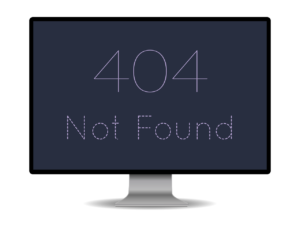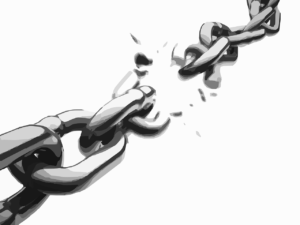Performing a site audit is an essential part of search engine optimization (SEO). Adding new content to a site is also very important. However, if you’re being dragged down by serious issues, then you won’t get far on content creation alone. When reviewing your site audit, several items need to be examined if not directly fixed sooner rather than later. Scanning your website and getting an updated site audit is crucial to verifying that you’ve solved the issues that were presented. Also, you want to perform a site audit at least once a month to see if there are new issues.
Webpage Status Codes
 There are five types of status codes: 1xx Informational, 2xx Success, 3xx Redirection, 4xx Client Error, and 5xx Server Error. 1xx status codes are very rare, so we’ll skip those. The 2xx codes are more common. If you see a 200 status code, then you’re doing just fine as it means your webpage is found and loaded fine. 300 status codes should be looked over. The most common here are the 301 redirects, which indicate that a URL has been permanently moved to a different URL.
There are five types of status codes: 1xx Informational, 2xx Success, 3xx Redirection, 4xx Client Error, and 5xx Server Error. 1xx status codes are very rare, so we’ll skip those. The 2xx codes are more common. If you see a 200 status code, then you’re doing just fine as it means your webpage is found and loaded fine. 300 status codes should be looked over. The most common here are the 301 redirects, which indicate that a URL has been permanently moved to a different URL.
You want to examine your 301 redirects to make sure that they are only redirected once. Note that you can redirect to always having ‘www.’ in front of your domain or you can make sure it doesn’t. You can also have a secure (HTTPS) and unsecured site (HTTP). If you want a secure site, you’d create a 301 redirect to ‘HTTPS’. With this information, the example of having a URL redirected twice would have an old redirect that removes the ‘www.’ on your old ‘HTTP,’ non-secure page that now also redirects to the secure ‘HTTPS’ version. https://www.oldURL.com redirects to https://oldURL.com, and now that the site is secure, you’re redirecting https://oldURL.com to https://oldURL.com. What you want is to change that first redirect from www to non-www to always go to the https version of your site. Fixing your redirects helps your search engine optimization by letting the search engines find your pages without delay.
The 4xx status codes are used when a webpage cannot be found, which commonly is the 404 (not found) code. You can also have a 400 (bad request), and a 403 (forbidden) code show up, and you want to see why that is. Make sure to check your 404 pages to ensure you want them to be gone and not indexed in the search results. Check to make sure you don’t have a new page that stated similar information as that should be redirected. If the information that used to be on the 404 page isn’t used anymore, then keeping it as a 404 is fine.
Finally, we have the 5xx errors, which mean that something is going on with your web server not delivering those pages. The 500 (internal server error) is the most common, though you may come across a 504 (gateway timeout) or a 502 (bad gateway) error. Check out your server and see if there is anything unusual going on that would prevent your site from showing. Did your server go through a maintenance update? Is there an issue with your server hosting? Fix these as soon as possible. Fixing these issues will help enhance your search engine optimization.
Robots.txt
 If you’re not aware of what the robots.txt file is, it’s a particular file on your website’s server that tells the search engine robots what pages they should crawl and what pages they shouldn’t. You also want to make sure that you tell them where to find your sitemap so that they can crawl that straight away. Make sure to check that you’re not blocking pages from being crawled that should be. You may also find some pages in your site audit that you want to add to the robots.txt file so that search engines don’t crawl or index them.
If you’re not aware of what the robots.txt file is, it’s a particular file on your website’s server that tells the search engine robots what pages they should crawl and what pages they shouldn’t. You also want to make sure that you tell them where to find your sitemap so that they can crawl that straight away. Make sure to check that you’re not blocking pages from being crawled that should be. You may also find some pages in your site audit that you want to add to the robots.txt file so that search engines don’t crawl or index them.
Search Engine Optimization: Broken Links and Images
 Check your site audit for broken links and images as those are going to be the items that you want to clear up sooner than later to help your search engine optimization. With broken images, you’ll want to add your images back wherever they are missing. You may find that they were accidentally deleted or that they were purposely deleted from the server, but were not removed from the pages causing them to be broken. You’ll want to look at both the internal and external links. The external links point to other websites; and due to that, the people who run the other sites may have removed the page(s) that you’re linking to. If they did remove them, find alternative pages or remove the links.
Check your site audit for broken links and images as those are going to be the items that you want to clear up sooner than later to help your search engine optimization. With broken images, you’ll want to add your images back wherever they are missing. You may find that they were accidentally deleted or that they were purposely deleted from the server, but were not removed from the pages causing them to be broken. You’ll want to look at both the internal and external links. The external links point to other websites; and due to that, the people who run the other sites may have removed the page(s) that you’re linking to. If they did remove them, find alternative pages or remove the links.
For your internal links, check to see why they are broken. If you fixed the pages that had error codes, 4xx and 5xx, then you should have fixed most of these broken pages. Make sure that your links aren’t being redirected and are instead pointing directly to the page you want them to land on. Also, since you’re using an internal link, don’t add your domain to the URL of the link. For example, if you’re linking to your services page, https://www.WebSite.com/services/, you want to instead just link to /services/. If you’re not leaving the domain, then remove the domain. You want to make sure to include the domain for all external links. Having nothing broken on your website is an important part of search engine optimization.
SEO Meta Tag Issues: Titles and Descriptions
When you perform a search and you scroll past the ads, you’ll find the organic search results, the ones that show up naturally through the search engine algorithm. The first thing people see that can help your search engine optimization is to make sure that you have good meta titles and meta descriptions. They are what you review when deciding to click on a link in your search results and it is no different for your customers. One of the first things you want to fix regarding meta tag issues is to add the tags where they are missing and to prioritize by focusing on pages in order of importance.
It is recommended that you learn about the desired lengths of the meta title and description. These can change, so you’ll want to do a quick search for that information. If your CMS doesn’t make it easy to change these meta tags, consider looking for a quality plugin that does. It shouldn’t be a difficult task for you to make these changes. You’ll want to make your meta tags with your customers in mind, so entice them to click and see what the page is about. Your focus keyword (or keyphrase) should be found in both as well, and SEO tends to perform better if they are near the front. Make sure the keyword (keyphrase) is also used regularly on the page.
After you’ve fixed the missing meta tags, you need to focus on duplicate meta tags as they can be just as detrimental as missing tags. Nothing should be duplicated on your website; however, if it cannot be helped, make sure that only 30% is duplicate content and the rest is completely unique. This applies to everything, not just meta tags. Check your existing meta tags to make sure they fall in line with the guideline lengths you looked up at the beginning, so you can fix them if necessary.
SEO Summary
These are just a few items to work on with your site audit, but they are very important and sometimes some of them can be overlooked. If you find other issues in your site audit, investigate them to see if they are indeed problems to resolve. Most site audit programs look for issues everywhere and aren’t intelligent enough to see that things are ignored by search engines such as pagination. Cleaning up your site audit will have a positive effect on your search engine optimization results.
By Doyle Clemence






























